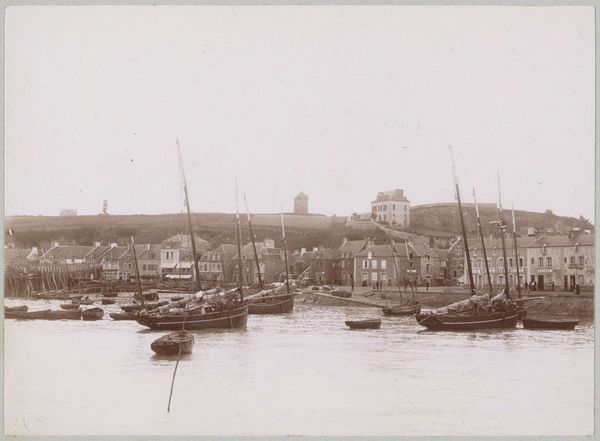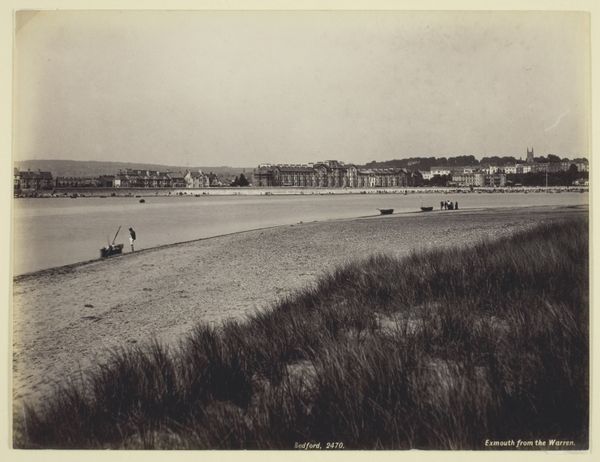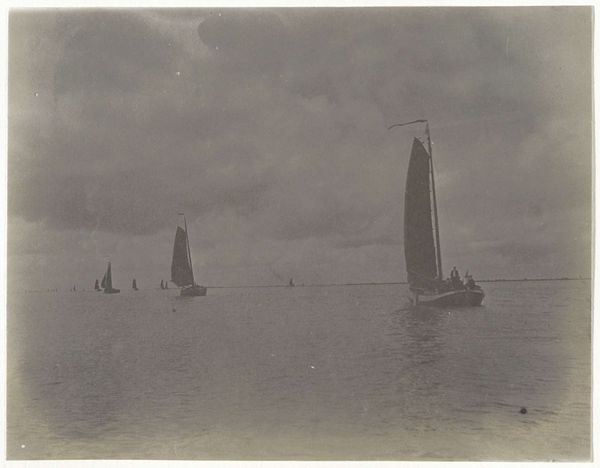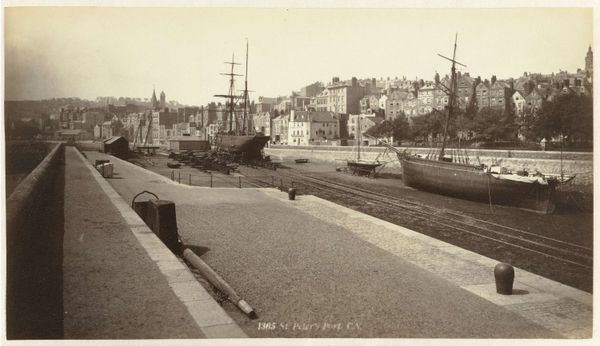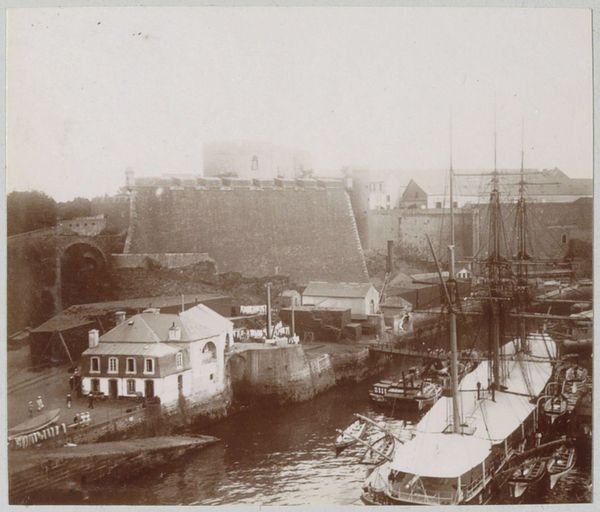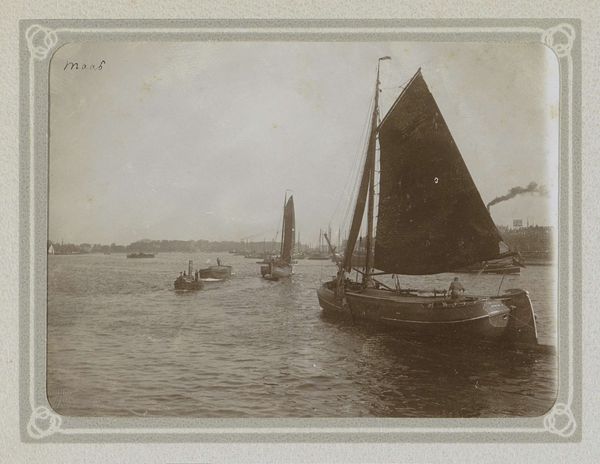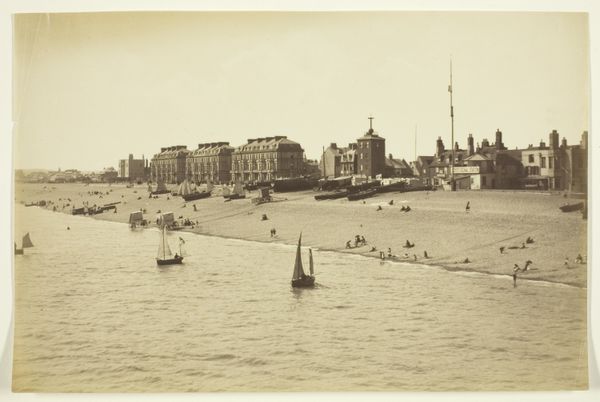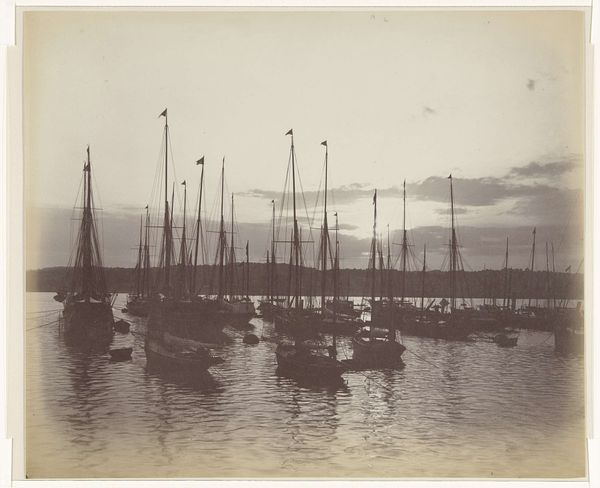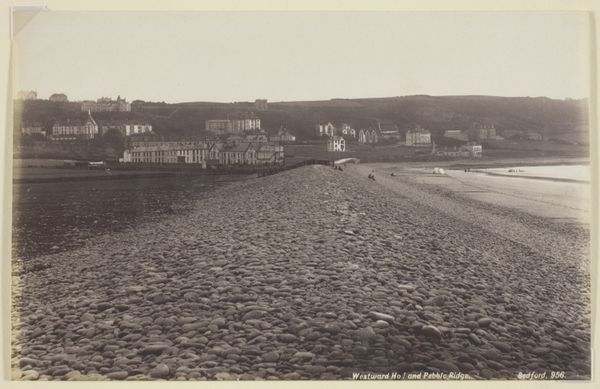
print, photography, gelatin-silver-print
#
pictorialism
# print
#
landscape
#
outdoor photograph
#
outdoor photo
#
outdoor photography
#
photography
#
gelatin-silver-print
#
cityscape
#
post-impressionism
#
realism
Dimensions: height 138 mm, width 212 mm
Copyright: Rijks Museum: Open Domain
Curator: Before us, we have a gelatin silver print from Carl Norman & Co., titled "Gezicht op Saint-Malo, met zeilschepen," dating roughly between 1880 and 1914. Editor: What a wonderfully balanced composition! The sailboats distributed across the water create a fantastic interplay of light and shadow, guiding the eye towards the walled city. Curator: Indeed. Let's consider the gelatin silver process, popular during this era. It allowed for mass reproduction and thus wider distribution. This particular print served perhaps a dual purpose, both artistic and as a mode of urban promotion for Saint-Malo itself, depicting its bustling maritime activity. Editor: Absolutely, the materiality emphasizes its inherent pictorial qualities! Note the gradation of tones and contrasts, particularly where the white sails interrupt the flat gray surface of the sea. The semiotic relationship between these contrasts defines space, and organizes visual experience. Curator: And the societal implications. Think about the labor involved: from the sailors on those ships, to the factory workers producing the photographic materials, and even the distributors who got images like this into the hands of the public. It reflects Saint-Malo’s prominent place within a larger network of trade and commerce, and photography's industrial aspects as well. Editor: Don't dismiss its formal complexity either! Look how the architectonic forms of Saint-Malo act as an anchor on the horizon line. And the Post-Impressionist stylistic qualities of the photograph that captures light, shadows, and atmospherics into one beautiful piece of art. The semiotic implications on this balance evoke stability, order, and visual delight! Curator: Certainly, these formal choices create an appealing image, which in turn reinforces a desired image of the city. Photography then, beyond just aesthetic concerns, becomes an active participant in shaping the very perception and commodification of a place like Saint-Malo. Editor: I appreciate now seeing it also as an urban product that goes beyond composition. Thanks to this context, what was initially aesthetic for me has opened up broader interpretations about the industrial era's society and material cultures. Curator: Exactly, this synthesis is vital for the production of critical art analysis! Hopefully our audience feels the same way.
Comments
No comments
Be the first to comment and join the conversation on the ultimate creative platform.


